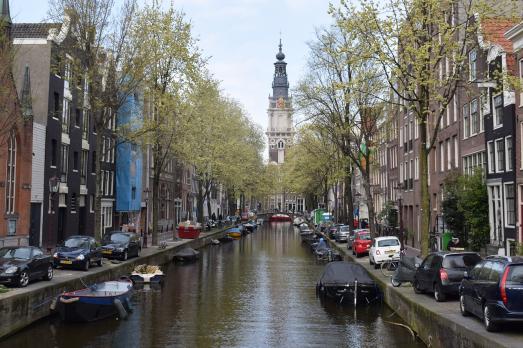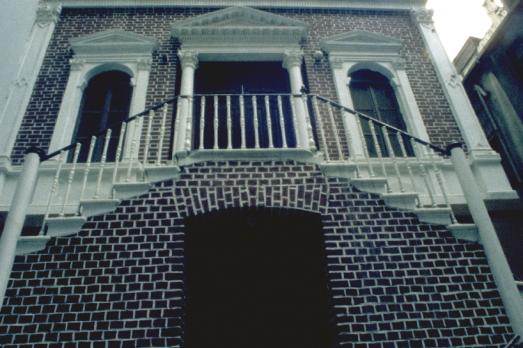Zuiderkerk
s-Gravenzande, NL
Built as a Reformed church. Reconstruction church with roof turret. Out of use as a Reformed church on 1 March 2010. On 24 March 2010 put into use as a church of the Restored Reformed Church of Monster-'s-Gravenzande.
Here you can search for a building to visit. You can use the map find destinations, or you can use the filters to search for a building based upon what different criteria.
s-Gravenzande, NL
Built as a Reformed church. Reconstruction church with roof turret. Out of use as a Reformed church on 1 March 2010. On 24 March 2010 put into use as a church of the Restored Reformed Church of Monster-'s-Gravenzande.
Hilversum, NL
Built as the Reformed Southern Church. Large, iconic church with tower. No longer in use as a Reformed Church in 1996. Threatened with demolition. Application for national monument status, rejected by (among others) the Cuypersgenootschap. In the meantime, there were plans to partially preserve the church building, in particular the tower. These plans included the incorporation of a supermarket and the construction of houses. The Assembly of Believers is said to have temporarily used the Reformed Southern Church; it is unclear whether this is correct. The Assembly of Believers Hilversum has been using the church building "Silo", Zadelstraat 3, since 1948. In 2006, the Southern Church was temporarily put into use by an Evangelical congregation (English and Dutch-language services), with the original name "Hilversum International Christian Center" (HICC), pending further plans. In November 2009, the name of this congregation was changed to "Thousand Hills International Church". In the meantime, the focal point had been changed considerably, including the removal of the pulpit and organ, replaced by screens and sound systems. The architectural spatial effect of the interior (particularly the very extensive wooden vault) remained intact. This also applies to the many stained glass windows, in the left and right side walls, in abstract expressionist forms. In the spring of 2012, this former Zuiderkerk was purchased by the "Thousand Hills International Church", after many financial campaigns, which wants to keep this church building in full use. The earlier plans for partial demolition and integration seem to have been abandoned. The current user wants to renovate the church building, which is in some disrepair, including returning the church tower to its original state. This restoration/renovation was subsidized by the Municipality of Hilversum in 2012-2013 with € 50,000.
Putten, NL
The organ was built in 1966 by the firm J. de Koff & Zoon (Utrecht). In 1982, the firm Ernst Leeflang (Jan Keijzer) in Apeldoorn expanded it with an independent pedal, installed in two towers on either side of the original organ case.
Delft, NL
Built as the Reformed Southern Church, extension in 1916. Decommissioned as a Reformed Church around 1965. After that used as a storage space.
Rijssen, NL
Church founded around 1838. Built due to a shortage of seats in the Noorderkerk. Construction started on 16 May 1966; a total of 1100 cubic metres of concrete and 10,000 kilograms of reinforcing steel were used, and 435,000 bricks were 'laid away'. The highest point was reached on 17 August 1967. A 921-kilo bell with the inscription: I was installed during the construction of the Zuiderkerk belonging to the Reformed Church of Rijssen in 1967 was placed in the tower. The church building was put into use on 15 May 1968. Current modern church building with tower in Rijssen-Zuid from 1968. It was put into use on 15 May 1968 with 1824 seats. In 1976, the church building was expanded with 2 galleries, bringing the number of seats to 1850. In 1986, the wedding hall was incorporated into the church hall, bringing the number of seats to 2,020. Striking because of its large dimensions. One of the largest post-war reformed church buildings in the Netherlands. "Refodome".

Aalten, NL
The Zuiderkerk in Aalten was built in 1965. It was the third Reformed church built in the municipality of Aalten. It is a modern rectangular church with a flat roof and narrow windows all around under the eaves, designed by architect W. van der Zee.
Nieuw-Amsterdam, NL
Hall church designed by HL Winters, built in 1873. Built in plastered brickwork. Front facade crowned by facade tower with wooden spire. Portal with entrance added later. The interior is covered by a barrel vault. The original inventory was lost due to modernizations. Single manual organ by L. van Dam & Zonen (Leeuwarden) from 1902. This church is listed as a National Monument of the Netherlands.

Amsterdam, NL
The Zuiderkerk, built between 1603 and 1614, is the first church designed in Amsterdam for Protestant worship. It was built in a Baroque style.

Almere-Stad, NL
Also Dutch Reformed Church and Reformed Church (Liberated), until 1995. A combined Christian Reformed Church / Dutch Reformed Church is located here. The Zuiderpoort is a congregation that has been a cooperative congregation since its foundation in 1983 and is affiliated with the Christian Reformed Churches (CGK) and the Dutch Reformed Churches (NGK). An important aspect of our being a congregation is that we seek ways to be hospitable to the residents of Almere and to the guests who attend our services. The congregation consists of approximately 400 members with a very diverse religious background.

Beyoğlu, TR
The Zülfaris (Kal Kadoş Galata) Synagogue in Istanbul is a Sephardi synagogue completed in 1823. It was rebuilt in 1890 and 1904. This stone building now serves as a museum.

new
The Chassidic Route is a cultural and historical trail tracing the rich legacy of Jewish communities in southeastern Poland and western Ukraine. This region was central to the rise of Chassidism in the 18th century. Here, we highlight 10 remarkable synagogues you’ll discover along this route.

he cradle of the Industrial Revolution in Germany, Chemnitz, is well-known for its industrial heritage landscape, but the city is also home to remarkable examples of religious architecture from different historical periods. Join us as we explore the key landmarks of this European Capital of Culture 2025.

The twin towns of Nova Gorica (Slovenia) and Gorizia (Italy), lying on the border between the two countries, have a rich religious heritage, steeped in centuries of tradition. If you are looking for ideas for your visit, take note of these 10 religious sites that you should not miss.